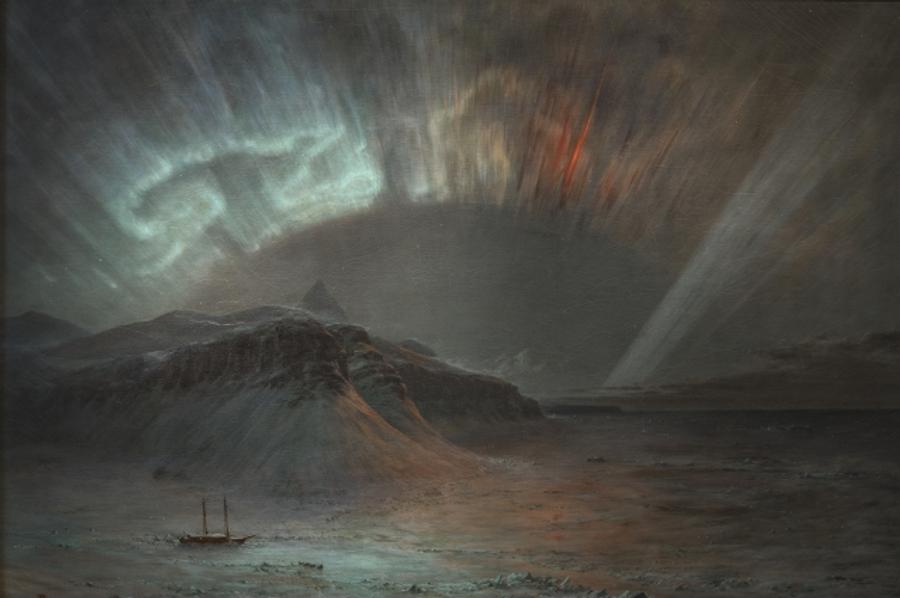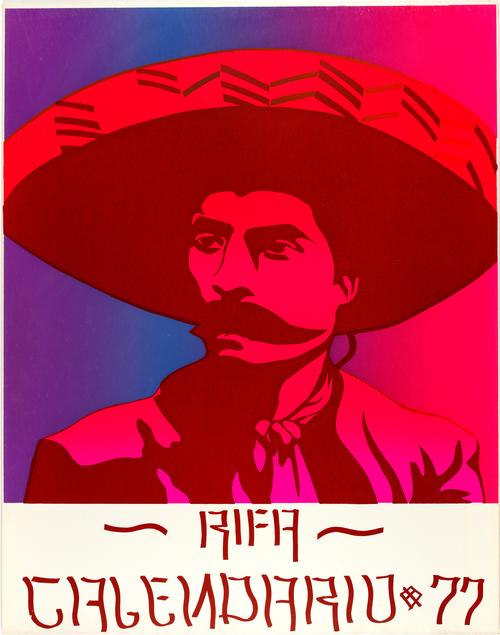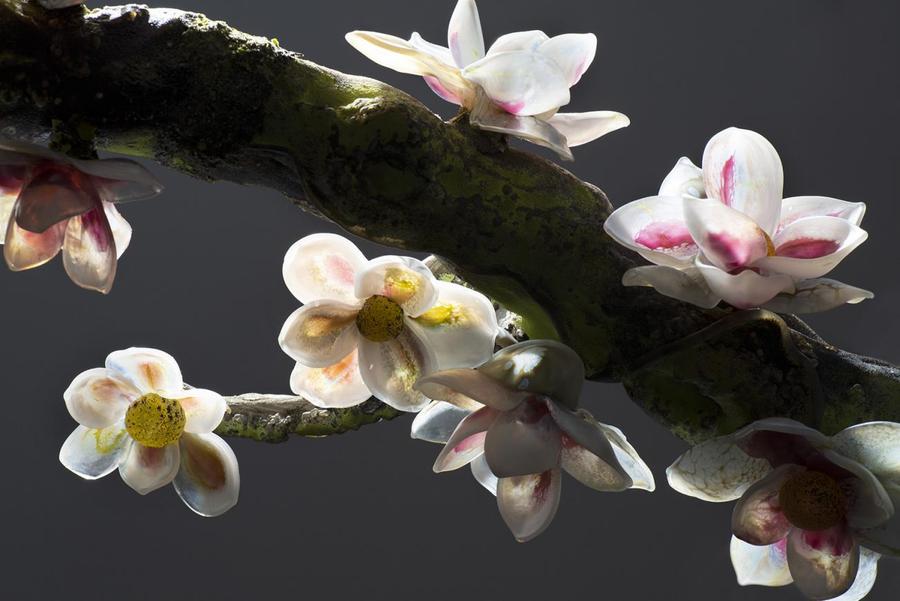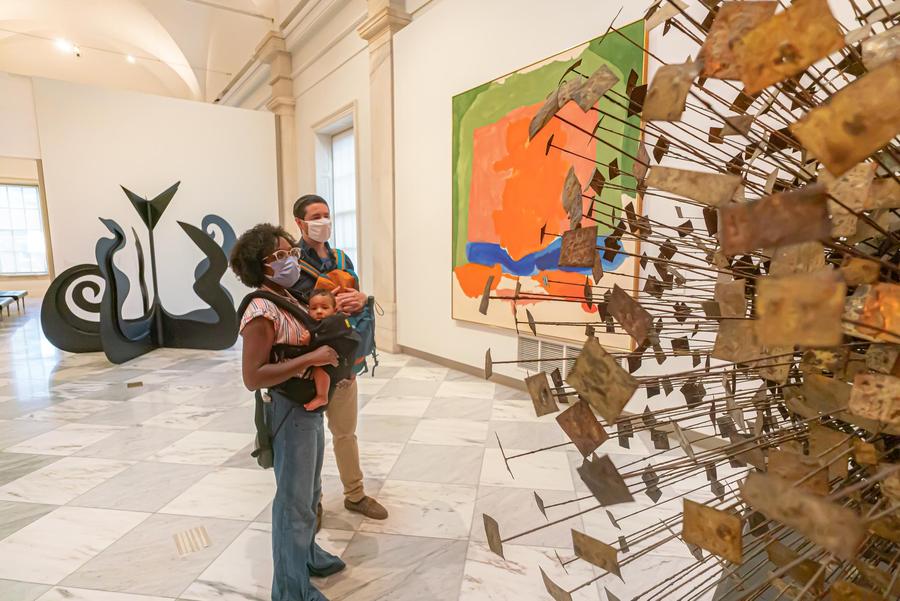
The Smithsonian American Art Museum and its branch museum, the Renwick Gallery, reopen to the public Friday, May 14. This is the second reopening of the museum following closures on March 14, 2020 and on Nov. 23, 2020 as a public health precaution due to the COVID-19 global pandemic. The museum has negotiated extensions into the summer for its three major exhibitions that were shuttered last fall.
“I am overjoyed to welcome visitors back to the Smithsonian American Art Museum and our Renwick Gallery to experience our relevant and impactful exhibitions—from powerful and vibrant prints by Chicanx artists and collaborators to a fossilized mastodon skeleton to a new site-specific artwork that transforms an entire gallery at the Renwick into earthly and heavenly realms,” said Stephanie Stebich, the Margaret and Terry Stent Director of the Smithsonian American Art Museum. “We also are deeply grateful to the collectors, museums and foundations for their continued generosity during these unprecedented times by agreeing to extend loans, in some cases for a second time, as well as the extraordinary effort of our staff to develop and install these thought-provoking projects.”

The landmark exhibition, “¡Printing the Revolution! The Rise and Impact of Chicano Graphics, 1965 to Now” was open for a mere three days in November 2020 before the Smithsonian closed for the second time due to the pandemic. The exhibition is the first to unite historic civil rights-era prints alongside works by contemporary printmakers, including several that embrace expanded graphics that exist beyond works on paper. Many Chicanx artists came of age during the civil rights, labor, anti-war, feminist and LGBTQ+ movements and channeled the period’s social activism into assertive aesthetic statements that announced a new political and cultural consciousness among people of Mexican descent in the United States. “¡Printing the Revolution!” explores the rise of Chicanx graphics within these early social movements and the ways in which Chicanx artists and their collaborators since then have advanced innovative printmaking practices attuned to social justice.
“¡Printing the Revolution!” features 119 works drawn from the museum’s leading collection of Latinx art. The exhibition opens with the powerful, large-scale installation “Justice for Our Lives,” a major work by Oree Originol. The collection of portraits includes the late George Floyd along with others who were killed during altercations with U.S. law enforcement since 2014. The museum’s Chicanx graphics holdings rose significantly with an important gift in 1995 from the renowned scholar Tomás Ybarra-Frausto. Since then, other major donations and an ambitious acquisition program have built one of the largest museum collections of Chicanx graphics on the East Coast. The exhibition will be on view at the museum’s main building from Friday, May 14, through Sunday, Aug. 8. Following its run in Washington, D.C., it will travel to the Amon Carter Museum of American Art in Fort Worth.
The museum’s critically acclaimed exhibition “Alexander von Humboldt and the United States: Art, Nature and Culture” reveals how the influential naturalist and explorer Alexander von Humboldt (1769-1859) shaped American perceptions of nature and the way American cultural identity became grounded in our relationship with the environment. It is the first exhibition to examine Humboldt's impact on five spheres of American cultural development: the visual arts, sciences, literature, politics and exploration, between 1804 and 1903. It centers on the fine arts as a lens through which to understand how deeply intertwined Humboldt’s ideas were with America’s emerging identity. Prominently featured in the exhibition is the original “Peale Mastodon” skeleton, on loan from the Hessisches Landesmuseum Darmstadt, with ties to Humboldt, the influential artist Charles Willson Peale and an emerging American national identity in the early 19th century. Its inclusion represents a homecoming for this important fossil that has been in Europe since 1847 and emphasizes that natural history and natural monuments bond Humboldt with the United States. The exhibition will be on view from Friday, May 14, through Sunday, July 11. It will not travel.

At the museum’s Renwick Gallery, the exhibition “Forces of Nature: Renwick Invitational 2020” examines how nature and art have the power to reframe perspectives and offer moments of release and inspiration in a world that is increasingly chaotic and detached from the physical landscape. Featuring artists Lauren Fensterstock, Timothy Horn, Debora Moore and Rowland Ricketts, the exhibition showcases the artists’ heightened ecological awareness that stems from a desire to commune with and advocate for the natural world. The artists, who use a wide range of craft media—from fiber and mosaic to metal and glass—examine the long history of art’s power to engage with the natural world through unconventional and highly personal perspectives. “Forces of Nature” is the ninth installment of the Renwick Invitational. Established in 2000, this biennial showcase highlights mid-career and emerging makers who are deserving of wider national recognition. The exhibition will be on view from Friday, May 14, through Sunday, Aug. 15. It will not travel.

Other installations that return to public view at the museum’s main building include a focused installation that features recently acquired photographs by Dawoud Bey in conversation with a painting by African American modernist William H. Johnson that refer to the Underground Railroad; and “The Automobile and American Art,” featuring a study collection of 100 model cars recently donated by Albert H. Small. At the Renwick Gallery is Janet Echelman’s “1.8 Renwick,” the popular fiber and lighting installation suspended from the ceiling of the Grand Salon.
Visitor information is available on the museum’s website at AmericanArt.si.edu/visit.